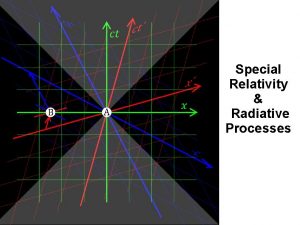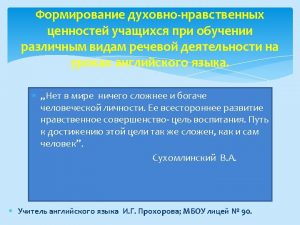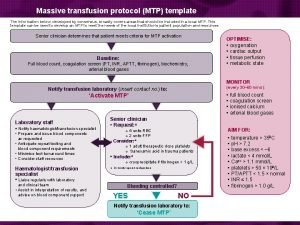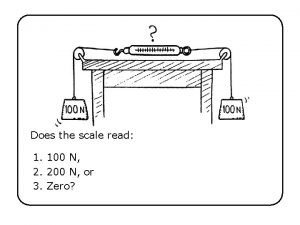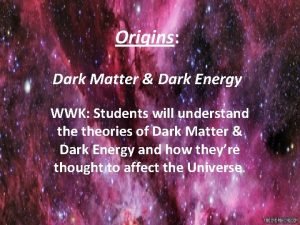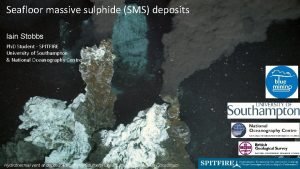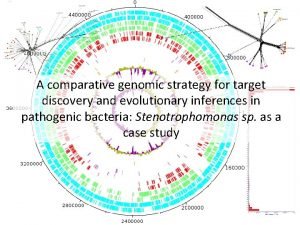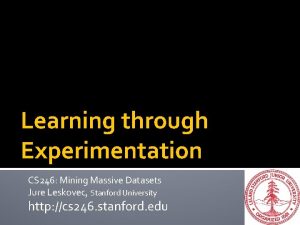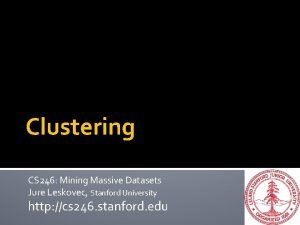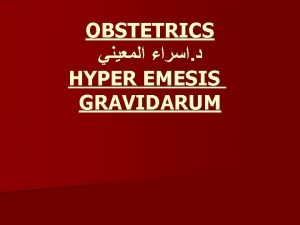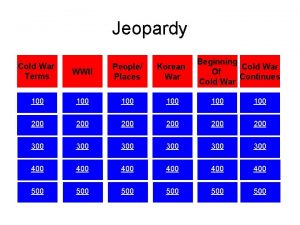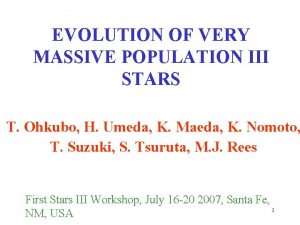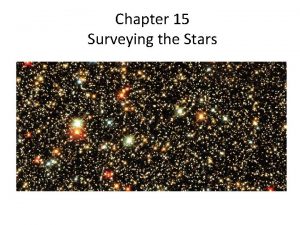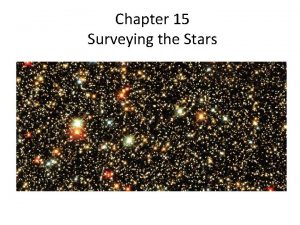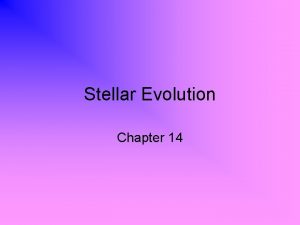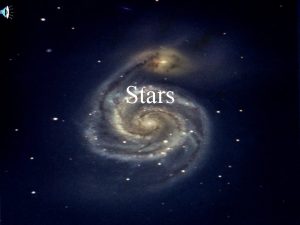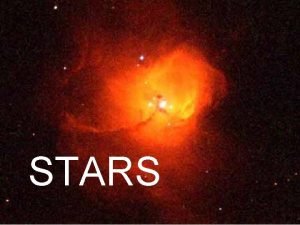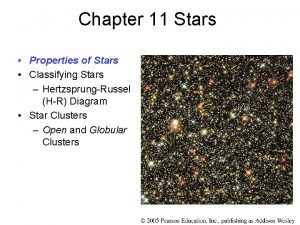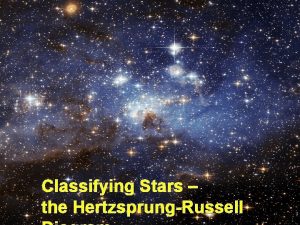21 Were the population III stars indeed massive































![Dust-induced fragmentation Tsuribe & KO (2006; 2008) [M/H]=-5. 5 [M/H]=-4 • • 10 AU Dust-induced fragmentation Tsuribe & KO (2006; 2008) [M/H]=-5. 5 [M/H]=-4 • • 10 AU](https://slidetodoc.com/presentation_image_h/c0538c8fd06616b957c116a3d81b6811/image-32.jpg)












![Condition on Metallicity Gas metals Dust dust cooling • For [M/H]gas > -3, the Condition on Metallicity Gas metals Dust dust cooling • For [M/H]gas > -3, the](https://slidetodoc.com/presentation_image_h/c0538c8fd06616b957c116a3d81b6811/image-45.jpg)











- Slides: 56




21㎝線で探る初期天体形成 • Were the population III stars indeed massive ? • Which population of stars reionized the universe ? SKA will probe them by 21 cm line !

Basics of 21 cm transition For 21 cm line to be observable, TS must deviate from Tg Collisinal de-ex. coeff. Lya coupling: Wouthuysen-Field effect xa, xc: Lya/collisional coupling coefficients TC(=~TK) : Lya color temperature TS TK In the following environments: • dense /hot/moderately ionized gas Furlanetto et al. (2006) • Abundant Lya photons

Global IGM evolution and its signal TS Tg TK zreion Abs. & emi. : astrophysical Pritchard & Loeb (2008) Absorption: cosmological This trough shows the strength of Lya flux

Reionization by Pop III vs Pop III stars: hot & top-heavy emit fewer Ly a photons than Pop II stars do. Pop II Furlanetto (2006) Pop II stars make deeper absorption trough (i. e. , more Lya coupling) than Pop III.

Tb fluctuation signal Pritchard & Loeb (2008) 1. High-z regime 21 cm power spectrum collisional coupling, tracks density field 2. Int. med. -z regime star formation enhances Lya coupling reionization reduces neutral gas rich in astrophysics 3. Post-zreion regime 2. 3. reionization 1. First star formation reflects distribution of residual neutral matter















Pop III. 2: Star formation in an initially ionized gas Temperature Evolution Nagakura & KO 2005 Yoshida, KO, Hernquist 2007 Initial ionization H 2 forms abundantly neutral • Ionized environments e. g. , relicl HII region, SN blast wave, structure formation shock ionized • HD formation and cooling dense core mass scale ~ 40 Msun


Hosokawa + 2012

Pop III. 2星形成(HDモード)への 光解離の影響 • Vulnerable to FUV • G 0>~10 -2 no HD cooling • This is due to H 2 photodissociation (Not due to HD photodissociation) Relic HII regionでは現実の宇宙で はPop III. 2は形成されない? Shocked region ではよさそう (Nakauchi+ in prep. )? G 0: strength of FUV ~1 in our Galactic disk





![Dustinduced fragmentation Tsuribe KO 2006 2008 MH5 5 MH4 10 AU Dust-induced fragmentation Tsuribe & KO (2006; 2008) [M/H]=-5. 5 [M/H]=-4 • • 10 AU](https://slidetodoc.com/presentation_image_h/c0538c8fd06616b957c116a3d81b6811/image-32.jpg)
Dust-induced fragmentation Tsuribe & KO (2006; 2008) [M/H]=-5. 5 [M/H]=-4 • • 10 AU Z>Zcr~10 -5 Zsun, fragmentation into low-mass (0. 1 -1 Msun) objects With slight Z enrichment, low-mass stars begin to form. Dopcke et al. (2011)


初代BH形成 Supermassive BH • Ubiquitously exist at the center of galaxies • BH mass correlates with galactic bulge mass MBH=2 x 10 -3 Mbulge

降着によるBHの成長 • 近傍のBH 質量密度はQSOがε=0. 1でEddington 降着しているとした予想 値とだいたい一致している (Soltan 1985, Yu&Tremaine 2002)。 • Eddington-limited accretion e (d. MBH/dt) c 2=LEdd =4 p. GMBHm. Hc/s. T より MBH=Mseed exp(t/t. Sal) ; ここで t. Sal = es. Tc/4 p. Gm. H=0. 05 Gyr e 0. 1 Mseed=100 Msun, MBH=109 Msunのとき、 tgrow = t. Sal ln(MBH/Mseed)= 0. 8 Gyr (cf. 宇宙年齢 0. 8 Gyr[(1+z)/8]-3/2)

High-z SMBH • SDSS J 1148 MBH=3 x 109 Msun, z=6. 42 (0. 87 Gyr) • ULAS J 1120 MBH=2 x 109 Msun, z= 7. 085 (0. 77 Gyr) 成長時間はかなり厳しいがEddington rateで降着が 続けば、辛うじてOKか e-folding time 2ε 0. 1 -1

種BHの成長 BH 100 Msun low phase high phase Eddington limit 数密度 中性度 Milosavlievic+2009 平均すると降着率はEddington limitの 30% Bondi 降着率の 0. 2%。 ⇒種BHの成長は順調とは言えないようである。



Requirements for SMS formation by direct collapse • Fragmentation suppressed – Rapid cooling fragmentation Without such cooling no fragmentation. – H 2 cooling is suppressed by FUV photodissociation • Formation timescale shorter than lifetime – High accretion rate >M*/t*~105 Msun/2 x 106 yr ~0. 05 Msun/yr – If no H 2, T~104 K d. M*/dt ~cs 3/G~ 0. 06 Msun/yr (T/104 K)3/2

primordial gas with strong FUV field Omukai 2001, Omukai & Yoshii 2003 Trad=104 K FUV intensity üJ<Jcrit at some density, H 2 cooling and fragmentation üJ>Jcrit isothermal collapse continues (H 2 collisionally dissociated > 104 cm-3)

SMS formation by the isothermal collapse Bromm & Loeb 2003 non-rotating üM~108 Msun halo virializing at z~10 (2 s over-density) with strong FUV J 21~4000 üFragmentation is inefficient direct collapse to 106 Msun supermassive star

New scenario: high-density shock in primordial gas Supermassive star formation Inayoshi & Omukai 2012 • shocks at >103 -4/cc, with> several 103 K – H 2 collisionally dissociated – Fragments at 8000 K with >~105 Msun – Isothermal collapse thereafter

Supermassive Star Formation is Common! J. Johnson’s slide The high LW fluxes required for SMS and direct collapse BH formation are present, even in our (4 Mpc)3 simulation volume Supermassive stars may be more common than previously thought JLJ, Dalla Vecchia & Khochfar 2012; see also Agarwal et al. 2012, Hummel et al. 2012, Petri et al. 2012
![Condition on Metallicity Gas metals Dust dust cooling For MHgas 3 the Condition on Metallicity Gas metals Dust dust cooling • For [M/H]gas > -3, the](https://slidetodoc.com/presentation_image_h/c0538c8fd06616b957c116a3d81b6811/image-45.jpg)
Condition on Metallicity Gas metals Dust dust cooling • For [M/H]gas > -3, the condition for the isothermal collapse becomes more stringent. For SMS formation; [M/H]gas < -3 [M/H]dust <-5 KO, Schneider, Haiman 2008 • For [M/H]dust > ~-5, dust causes rapid cooling and fragmentation Note: dust formation in the early universe is inefficient. Only <~10% survives after SN reverse shock (Nozawa et al. 2006; Bianchi & Schneider 2007). if so, [M/H]dust < -4

Possible sites of high-density shocks • Galaxy merger driven inflow (Mayer et al. 2010) probably metal-rich 大スケール 中心部 拡大

Possible sites of high-density shocks • Cold-accretion-flow shock in the central ~10 pc region of the first galaxy (Dekel & Birmboim 2006, Wise, Turk & Abel 2008)

First galaxyはBHの成長にも適した環境 • cold flowによるaccretionはfeedbackをあまり受けず、 SMBH(Mseed=105 Msun)は順調にz~7までに 109 Msunに成長。 以後、hot accretionが主になるとfeedbackを受けて成長が鈍化。 di Matteo+ 2011


stellar radius : R* ( R 8) New Branch at high accretion rate Hosokawa & KO in prep. stellar mass: M* ( M 8) Ø New evolutionary branch with higher rates of > 0. 01 M 8/yr Ø The star continues to expand, never contracting to the ZAMS

Stellar radius:R* ( R 8) At even higher accretion rates Hosokawa & KO in prep. ∝ 0. 5 M* Stellar mass :M* ( M 8) Ø Unique mass-radius relation: R*∝M*0. 5 , which is independent of mass accretion rates Ø 7000 Rsun ≒ 300 AU @ 1000 Msun : “supergiant” protostars

Interior Structure 10 -3 M 8 / yr Most part of the stellar interior contracts, and central temperature increases H-burning begins at 700 M 8, but the star is still bloating (different from the ZAMS )

Evolution on the HR diagram NO UV feedback from bloated massive stars Very massive stars (> 100 Msun) could form via very rapid mass accretion with > 0. 01 Msun / yr. (but still unknown if the star becomes supermassive (105 Msun) or not)



 Life cycle of stars project
Life cycle of stars project The stars there are millions of stars in the sky
The stars there are millions of stars in the sky Hamlet act iii scene ii
Hamlet act iii scene ii Stars were gleaming shepherds dreaming
Stars were gleaming shepherds dreaming Indeed1
Indeed1 Sector alarm indeed
Sector alarm indeed General relativity vs special relativity
General relativity vs special relativity A nose in need deserves puffs indeed slogan
A nose in need deserves puffs indeed slogan What do islam call their god
What do islam call their god He is risen indeed banner
He is risen indeed banner We must indeed all hang together
We must indeed all hang together A friend in needs a friend indeed
A friend in needs a friend indeed Noha moral
Noha moral Pressure symbol
Pressure symbol Successful indeed are the believers
Successful indeed are the believers Indeed in the messenger of allah
Indeed in the messenger of allah Population ecology section 1 population dynamics
Population ecology section 1 population dynamics Population ecology section 1 population dynamics
Population ecology section 1 population dynamics Chapter 4 section 1 population dynamics answer key
Chapter 4 section 1 population dynamics answer key Chapter 4 population ecology section 1 population dynamics
Chapter 4 population ecology section 1 population dynamics Chapter 15 furniture styles and construction answer key
Chapter 15 furniture styles and construction answer key There once was a lady from niger
There once was a lady from niger Massive open online courses
Massive open online courses Mtp template
Mtp template Mining of massive datasets solution
Mining of massive datasets solution Bambonite
Bambonite Massive transfusion complication
Massive transfusion complication Grades of splenomegaly
Grades of splenomegaly Massive wood chipper
Massive wood chipper What are the complications of blood transfusion
What are the complications of blood transfusion Topography associated with massive igneous rock
Topography associated with massive igneous rock Endophytes are primary producers that live
Endophytes are primary producers that live Mtp template
Mtp template Cs 246
Cs 246 The woman supports a 100 n load
The woman supports a 100 n load Massive compact halo objects
Massive compact halo objects Faranoush
Faranoush Hémiplégie massive proportionnelle
Hémiplégie massive proportionnelle Hemolytic transfusion reaction
Hemolytic transfusion reaction Seabed massive sulphides (sms)
Seabed massive sulphides (sms) Massive comparative and superlative
Massive comparative and superlative Stanford mining massive datasets
Stanford mining massive datasets Massive hemothorax
Massive hemothorax Cs 246 stanford
Cs 246 stanford Hyper massive gravidarum
Hyper massive gravidarum Why did stalin want to create a “buffer zone”?
Why did stalin want to create a “buffer zone”? A small sports car collides head on with a massive truck
A small sports car collides head on with a massive truck Massive transformative purpose examples
Massive transformative purpose examples Massive.io
Massive.io Massive hemothorax
Massive hemothorax Future in the past simple
Future in the past simple Làm thế nào để 102-1=99
Làm thế nào để 102-1=99 Tỉ lệ cơ thể trẻ em
Tỉ lệ cơ thể trẻ em Lời thề hippocrates
Lời thề hippocrates đại từ thay thế
đại từ thay thế Quá trình desamine hóa có thể tạo ra
Quá trình desamine hóa có thể tạo ra Công của trọng lực
Công của trọng lực






